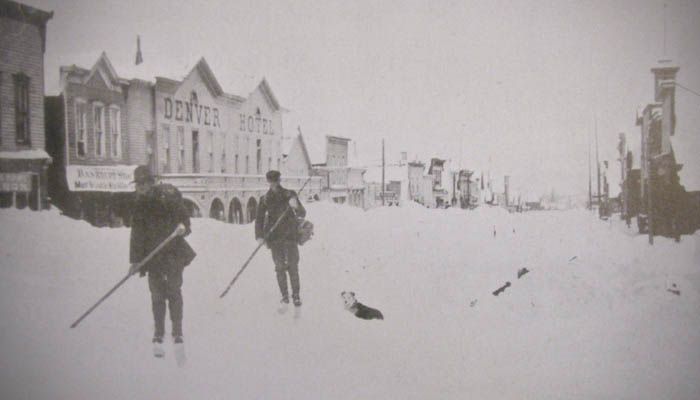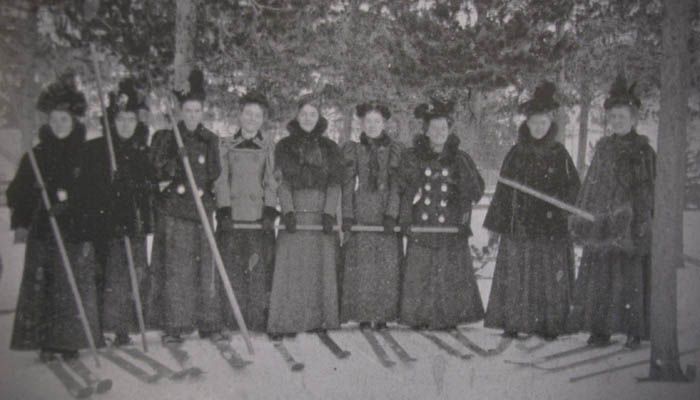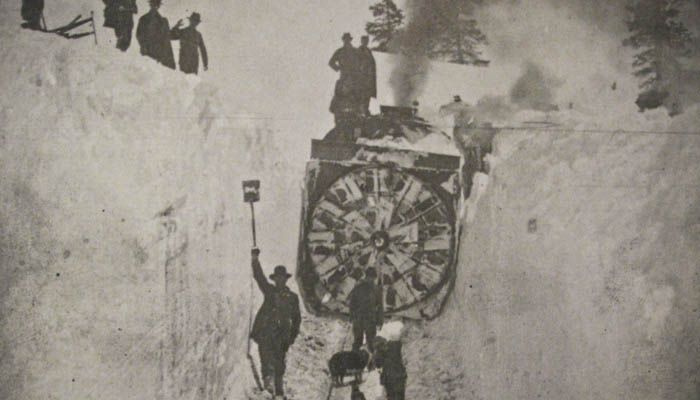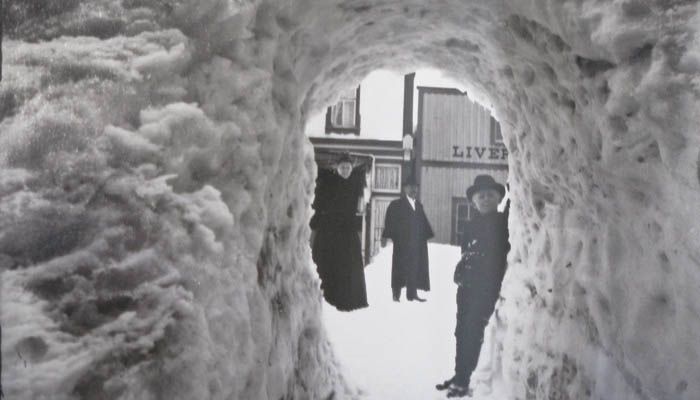History
Gold Fever In Our Backyard
Most of our guests knows that the Town of Breckenridge was a hot-bed of gold mining activity from the mid-1800s until well into the 1900s. What many people don’t know is that much of the gold production that Breckenridge is still famed for actually came out of our neighborhood -the Swan River Valley and its surrounding hills. Today, those same trails that the prospectors and trappers traveled every day are alive with the growl of snowmobiles and the excited howls of sled dogs.
Noted here are the towns that were located along or near the site of our present-day adventures – snowmobiling and dog sledding in the winter; biking, hiking, and fishing in the summer. One cannot expect to see these “towns” still standing because, even when our snow is melted, some of the gold camps remain buried by the rocky rubble that the mining itself produced.

Swan River Valley 1859-1938
The Swan River Valley has long been an area of heavy activity. By the late 1850’s the Indians and trappers were no longer the only ones that knew about gold in the streams. The trappers, knowing that a gold rush would destroy the abundance of their game, tried to keep it secret. By 1860, 100-200 people a day were coming over the high mountain passes seeking their fortunes in gold. The Continental Divide at Georgia Pass was one of four major passes coming into Summit County. Its relatively mild approach from the east made it popular for these early adventurers.

Swan City
- Post office 1880 – 1890’s
- Population 300
Located at the mouth of Browns Gulch, 2 miles west of our facility was swan city. By May 1880, there was a hotel, post office, general store and saloon. Swan City’s school was opened on February 11, 1884. Mail was delivered 3 times a week. Residents spoke of the abundance of game in the area-
Both place and lode mines worked in the area – the Cashier, the Hamilton and the IXL being the best. Broncho Dave Braddock’s stage line ran to Swan City from Breckenridge and ore was shipped out by wagon to where the railroad stopped at the tow of Braddocks (intersection of Hwy 9 and Tiger road).

Rexford
- Post Office 1880-1883
Rexford was a company town located up the North Fork. The Rexford Mining Corporation was organized in 1881 and sold $100,000 worth of stock. Up the road from the town was Rexford’s mine, the Rocester King (Arrastre King). It was discovered by Daniel Patrick in 1880, and grossed $5,000 per month in its early days. Twice a week mail traveled to the Swan River Valley from Montezuma over the 11,750 foot pass at the head of Sts. Johns Creek.

Swandyke
- Post Office 1898-1910
- Population 400-500
Near timberline on the Middle Fork of the Swan River sat Swandyke. Stagecoach service from the railroad terminal at Jefferson in South Park brought Denver visitors in a 1-day trip despite the hairy descent down Georgia Pass. The business included a butcher shop, saloon, barbershop, blacksmith shop, and ore mills.

Parkville
- Post Office 1861 -1866
- Population 8,000 – 10,000
Located at the Georgia Gulch, Parkville was THE mining town of Summit Count. In fact, it was the county seat until 1862 when some Breckenridge residents stole the records by moonlight so that Breckenridge would be seen as the “gold capitol”.
The first strike in Georgia Gulch came in 1859 by a small party of Georgia Miners. By 1860 there were 1,800 voters. Early on, it was common for 3-
Parkville was both the supply center and the social center for the Swan River Valley. Top touring entertainers of the day came to perform at the newly built theatre. Even a brewery opened up.
In the short summer seasons from ’59-

Tiger
Located 1 mile West of our base facility, the town of Tiger dates from 1864 when miners uncovered the Tiger lode on a prospecting trip up the Swan River. Tiger turned into a company town owned by the royal Tiger Mining Company who under John Traylor grouped all nearby mines under one corporation. As other camps in the area were abandoned, the miners move to Tiger. The Best years were from 1918 to the 1930’s. During this time the Royal Tiger Mining Company provided vital tax and payroll dollars for a depressed Summit County. The town boasted a good school, mill, blacksmith shop, assay office, bunkhouse, boarding house, office building, and company physician.
In 1938 the Royal Tiger Mining Company filed for Bankruptcy. B&B Mines acquired the property in 1940. In 1973, the town was torched by the U.S. Forest Service to rid the old buildings of “squatters”. Ore from Tiger was produced steadily for 75 years from 1864 until 1939; longer than any mine in the region.
The names “Tiger” and “Royal Tiger” derive from the Spanish custom of using the names of prominent mines. In Mexico, South American and Sapin you can find many mines named “El Tigre”.

Braddocks
Special Thanks
To the Barney Ford Museum, and authors Mary Ellen Gilliland –